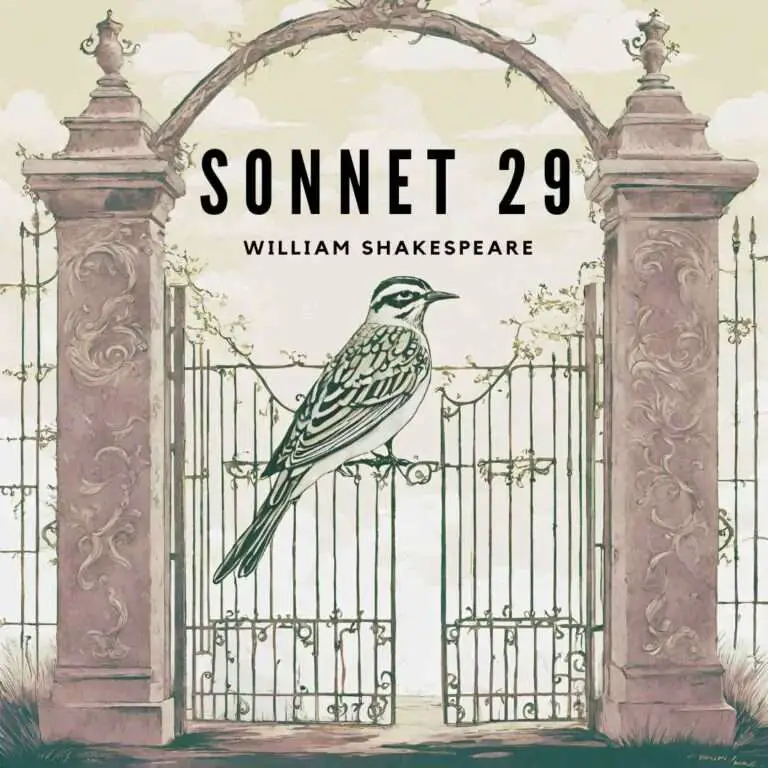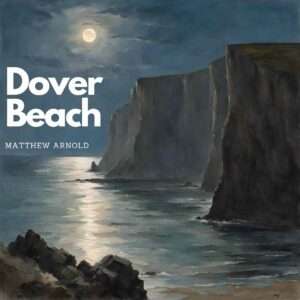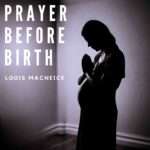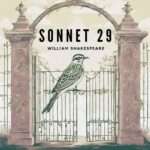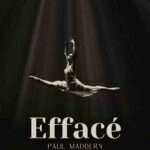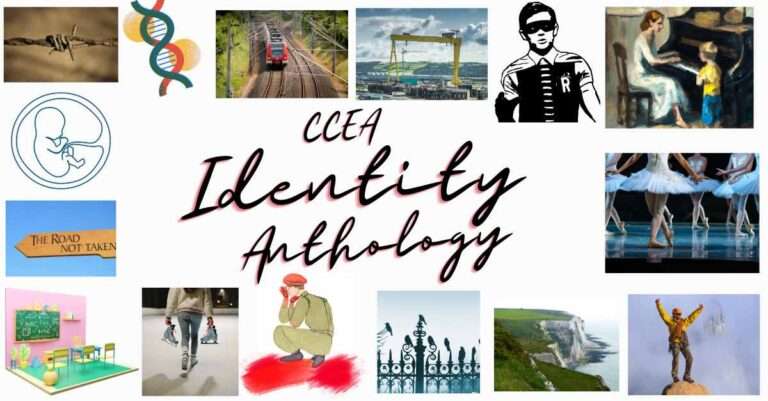Sonnet 29 by William Shakespeare examines the power of love and human relationships to overcome a crisis of identity, and the negative pressures of the world.
This study guide is written for students and teachers of English Literature, particularly those studying CCEA’s GCSE English Literature Identity Anthology. For more study guides from this anthology, check out the Identity page, or the list of poems in the series at the bottom of this guide.
Sonnet 29
What is Shakespeare's 'Sonnet 29' all about?
Summary of Sonnet 29
In the first half of the sonnet, the speaker feels full of gloom and despair. He has faced opposition from the world around him and he feels that even God doesn’t hear his grief. The speaker is jealous of his competitors and he despises himself too. In the second half of the sonnet, things change. He thinks of his love and his spirit feels reborn, his gloom is lifted and in the end, he wouldn’t even swap lives with a king, such is his joy and contentment.
This sonnet illustrates the power of love to transform even the darkest of situations.
Context
William Shakespeare’s sonnets, including Sonnet 29, are believed to be autobiographical. They are often seen as intertwined with his life and career, as we will see when we look at the context of Sonnet 29. Understanding the background of Shakespeare’s life and the pressures he faced can give insights into the themes and emotions expressed in his poetry.
William Shakespeare's life, education and career
William Shakespeare is regarded as the greatest playwright and poet in the English language.
He was born in Stratford-upon-Avon, England, in 1564. His exact date of birth is unknown, but he was baptised on April 26 1564. Little is documented about his early life, but it is believed he attended the local grammar school in Stratford, where he would have received a classical education focused on Latin literature.

Shakespeare’s career in London began in the late 1580s when he became involved in the city’s thriving theatre scene. He became an actor and eventually became a playwright, gaining recognition for his poetic language, vivid characters, and exciting plots. He is most famous for his tragic plays, including ‘Romeo and Juliet’, ‘Macbeth’, ‘Hamlet’ and ‘King Lear’, as well as his comedies, including ‘Much Ado About Nothing’, ‘The Taming of the Shrew’ and ‘A Midsummer Night’s Dream’. In total, Shakespeare wrote 38 plays.
Context of 'Sonnet 29'
However, despite his success, Shakespeare faced significant challenges and criticism. One notable instance was the attack by Robert Greene, a rival playwright, who referred to Shakespeare as an “upstart crow” in a pamphlet published in 1592. Greene’s criticism, though aimed at disparaging Shakespeare, ironically highlights the rapid rise of Shakespeare’s reputation in the competitive world of Renaissance theatre.
Moreover, Shakespeare worked under considerable pressure. The Elizabethan era was marked by political instability, social upheaval, and economic challenges. Playwrights like Shakespeare relied on the blessing and patronage of rich noblemen and even the monarch. Queen Elizabeth I and King James I both visited the Globe Theatre to watch Shakespeare’s plays and so his works had to conform to prevailing cultural norms and censorship laws, as well as pleasing the monarch.
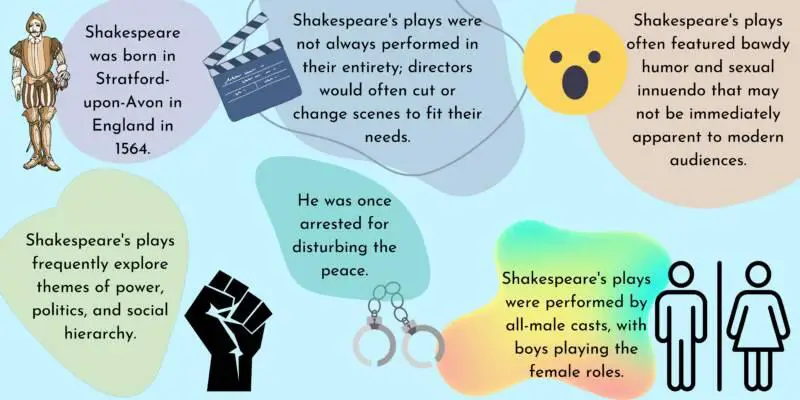
Sonnet 29, written in the early 1590s, reflects some of the personal struggles and existential dilemmas that Shakespeare may have experienced during this period of his life. The speaker of the sonnet grapples with feelings of inadequacy, longing for social acceptance, and the redemptive power of love amidst adversity.
Who is the speaker of 'Sonnet 29'?
In Sonnet 29, the speaker is not explicitly identified by name or other personal details The poem is written in the first person, so it is assumed that the speaker is the persona or character that Shakespeare has created to convey the poem’s themes and emotions.
It is a common belief that Shakespeare is the speaker in his sonnets, including Sonnet 29. Details of Shakespeare’s life suggest that the speaker shares much in common with Shakespeare himself. For example, tradition has it that Shakespeare had a long-term affair with a young man; this sonnet is part of a series dedicated to the ‘Fair Youth’.
In addition, Shakespeare is believed to have been publicly shamed in 1592 when fellow playwright Robert Greene wrote about him, that
” … there is an upstart crow beautified with our feathers, that with his tiger’s heart wrapped in a player’s hide, supposes that he is as well able to bombast out a blank verse as the best of you. And being an absolute Johannes Factotum is in his conceit the only Shakescene in the country.”
Read more about Robert Greene in this great article.
It is easy to see how Shakespeare himself might have felt “in disgrace with fortune and men’s eyes”. And so many have felt persuaded to interpret the speaker of Sonnet 29 as Shakespeare himself.
However, it is important to note that the speaker in a poem is not necessarily the poet himself. While there may be autobiographical elements in the sonnets, it is also possible that Shakespeare used a fictional persona or character to convey his thoughts and emotions. The true identity of the speaker in Sonnet 29 is unknown.
Line-by-line analysis of 'Sonnet 29'
When, in disgrace with fortune and men’s eyes,
- The opening line of the poem does not end until the full stop at the end of line 14, making this sonnet all one continuous sentence!
- A parallel structure is used in this line highlighting the speaker’s sense of being out of favour in two ways: firstly, with luck (‘fortune’) and secondly, with other people (‘men’s eyes’).
- The tone in the opening line is gloomy due to rejection and misfortune.
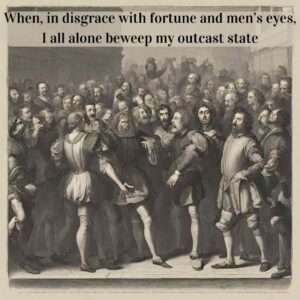
I all alone beweep my outcast state,
- Alliteration creating repetition of the ‘l’ sound in ‘all alone’ adds to the sense of isolation and loneliness experienced by the speaker.
- The emotive nature of the poem is clear in this line.
- ‘Beweep’ is an archaic word. It is used instead of ‘weep’ to keep the iambic rhythm of the line: (I all/ alone/ beweep/ my out/cast state)
- The double use of personal pronouns ‘I’ and ‘my’ emphasises the speaker’s personal suffering.
- The metaphor ‘outcast state’ conveys their isolation and despair.
And trouble deaf heaven with my bootless cries,
- Personification in ‘deaf heaven’ gives human attributes to the abstract concept of heaven, emphasising the speaker’s feeling of abandonment.
- Consonance in ‘trouble deaf heaven’ amplifies the sense of futile effort.
- The adjective ‘bootless’ suggests something useless or futile (it has nothing to do with boots!)

And look upon myself and curse my fate,
- Again, the use of personal pronouns ‘myself’ and ‘my’ highlights the speaker’s introspection as they reflect on their own condition and express frustration with their destiny.
Wishing me like to one more rich in hope,
- The use of the simile ‘like to one’ compares the speaker’s desire to be more hopeful with someone else, highlighting their envy.
- ‘rich in hope’ links to the theme of wealth: the speaker is not only feeling poor in terms of the respect of others but poor in monetary wealth.
Featured like him, like him with friends possessed,
- The repetition of ‘like him’ emphasises the speaker’s longing to possess the same qualities as others, such as physical beauty (‘featured’) and social connections (‘with friends possessed’).
- This line is fractured with commas creating caesurae (pauses) in the line. These pauses cause a start/stop interruption to the rhythm of the line, adding to the stress and anxiety felt by the speaker.
Desiring this man’s art and that man’s scope,
- Here, the speaker expresses desire not only for material possessions but also for the talents and opportunities enjoyed by others.
- The use of parallel structure (‘this man’s… that man’s’) highlights their intense longing.
With what I most enjoy contented least;
- This line employs antithesis (“most… least”) to emphasise the speaker’s discontent even with the things they once found enjoyable.
Yet in these thoughts myself almost despising,
- The use of introspection continues as the speaker admits to almost despising themselves for their envious thoughts, highlighted with another personal pronoun (‘myself)
- ‘Yet’ marks the beginning of the shift, or Volta. The change is coming, where the speaker looks away from himself and his introspection and outwards at his love.
Haply I think on thee, and then my state,
- The use of caesura (‘haply I think on thee’) emphasises the moment of reflection, suggesting a sudden change in the speaker’s emotional state.
(Like to the lark at break of day arising
- This line uses a simile to compare the speaker’s emotional upliftment to the rising of a lark at dawn, conveying a sense of newfound joy and hope.
- See the themes section below for analysis of larks in literature
From sullen earth) sings hymns at heaven’s gate;
- Sibilant sounds (‘sings hymns’) emphasise the sense of joy here.
- The negative ‘sullen earth’ runs straight in to the positive image of ‘heaven’s gate’, reinforcing the sense of continuity and elevation.
For thy sweet love remembered such wealth brings
- Interesting syntax (‘thy sweet love remembered’) places the speaker’s love at the start of the phrase, emphasising the importance of the memory of the speaker’s love in bringing the speaker emotional wealth and contentment.
- Wealth is referred to again (previously ‘rich’ and ‘fortune’ were mentioned), however after the volta, the wealth is not monetary but rather emotional.

That then I scorn to change my state with kings.
- The use of hyperbole (‘scorn to change my state with kings’) emphasises the speaker’s newfound sense of contentment and emotional fulfilment over material wealth and status.
- Finally, the sentence ends with a full stop, bringing a decisive end to the sonnet. This decisive end is highlighted by the close and full rhyme of ‘brings’ and ‘kings’.
Analysis of form and structure
What is a sonnet?
The term ‘sonnet’ refers to a specific form of poetry.
A sonnet is a highly structured poem.
Often, sonnets explore the themes of love, nature, desire, beauty, and mortality. Due to their tight structure and concise length, they tend to be very intense explorations of these themes.
The most common types of sonnets are the Petrarchan (Italian) sonnet and the Shakespearean (English) sonnet. They are largely similar in their length, rhythm and content, but differ slightly in their structure and rhyme scheme.
Let’s focus on the Shakespearean sonnet, as Sonnet 29 is (obviously!) a Shakespearean sonnet.
A Shakespearean sonnet consists of 14 lines written in iambic pentameter. The rhyme scheme of a Shakespearean sonnet is ABAB CDCD EFEF GG, where the last two lines are a rhyming couplet.
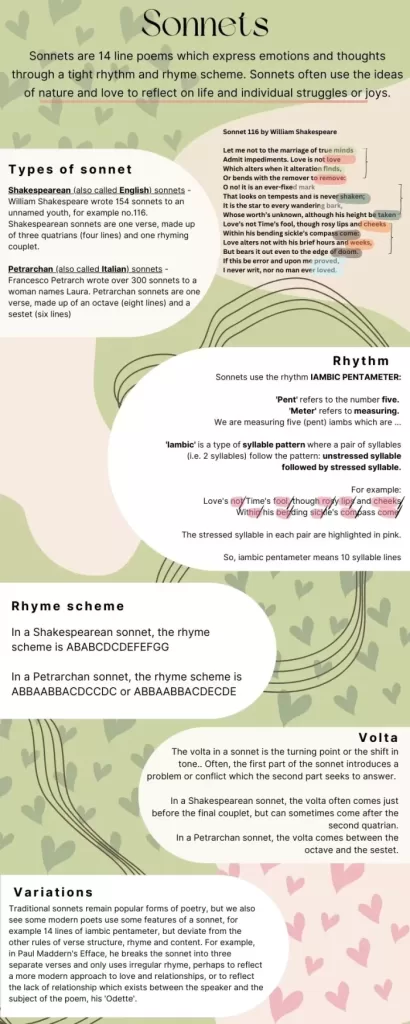
Verse structure
A Shakespearean sonnet is one verse which consists of 14 lines. Within these 14 lines, there is usually a structure of three quatrains (four-line sections) and a final couplet (two lines).
While the quatrains and couplets are all contained within one verse, there is a shift in the rhyme scheme to mark each section.
Volta
The sonnet typically contains a Volta, which is the Italian word for ‘turn’. This Volta usually occurs between the second and third quatrains. The turn usually marks a change in the tone, attitude or focus of the speaker. Often, a question has been raised in the first part of the sonnet which is answered in the second half, after the Volta.
What is the volta in Sonnet 29?
The Volta in a Petrarchan sonnet comes after the octave.
In contrast, Shakespearean sonnets do not always keep the Volta in the same place. A Shakespearean sonnet often has the Volta before the final rhyming couplet or after the octave.
In Sonnet 29, the Volta comes after the octave, in between lines 8 and 9. It is marked by the keyword ‘Yet’ which shows the change in thinking for the speaker. The change here is from despair and self-loathing in the octave, to optimistic and fulfilled in the sestet.
Rhyme
Sonnets have a very regular rhyme scheme. The pattern varies depending on whether it is an Italian or an English sonnet.
An English or Shakespearean sonnet has a rhyme scheme ABAB CDCD EFEF GG. The final rhyming couplet usually offers an answer or resolution to the question or problem of the preceding lines.
Rhythm
Each line of a Shakespearean sonnet is written in iambic pentameter, which means that it has 10 syllables and follows a pattern of unstressed/stressed syllables.
Themes in 'Sonnet 29' by William Shakespeare
Identity
Sonnet 29 by William Shakespeare explores identity through the speaker’s internal struggle with self-worth, societal perception, and the transformative power of love.
Beginning with a sense of discontent and isolation from both fortune and society, the speaker expresses a desire to change and compares themselves to others who seem more fortunate, longing for their features, friendships, talents, and opportunities.
However, a shift occurs when the speaker recalls the memory of their beloved, leading to a transformation from despair to contentment and gratitude. The poem highlights the theme of identity as a journey from doubt and envy to self-acceptance and gratitude, shaped by the transformative power of love.
Love
In Sonnet 29, Shakespeare explores love, portraying it as a catalyst for emotional transformation and redemption.
The speaker’s initial state of despair and longing for acceptance is alleviated when they remember their beloved. This memory brings about a profound shift in the speaker’s emotional state, lifting them from their feelings of isolation and inadequacy to a sense of contentment and gratitude.
Love is depicted as a source of richness greater than material wealth.
Larks
The lark is a recurring symbol in English literature, representing a variety of ideas such as joy, love, freedom, and the fleeting nature of life. Larks’ sweet and melodious song has captivated writers and poets, including William Shakespeare.
Shakespeare often used larks as a symbol of the coming of dawn or the beginning of a new day. In “Romeo and Juliet,” the lark’s song is used as a signal for Romeo to leave Juliet’s bedroom before he is discovered by her family. The lark’s song in “Cymbeline” signals the start of a new day and a new beginning for the characters. In “The Winter’s Tale,” the lark’s song represents the freedom and happiness of nature, contrasting with the stifling environment of the court.
Outside of Shakespeare’s works, larks have also appeared in literature such as Percy Bysshe Shelley’s “To a Skylark,” in which the poet marvels at the bird’s ability to soar and sing.
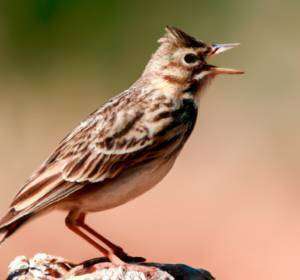
Heaven
The personification of heaven as ‘deaf’ in line 3 emphasises the speaker’s frustration that despite all the help and support he needs, God does not hear him. In addition, synecdoche is used to refer to God, one part, as ‘heaven’, the whole. In this way, the huge notion of God and all of its religious significance is bound up in the simple reference to heaven. This is typical of sonnets to use brevity to keep the tight rhythm, structure and concision essential for the form.
After the volta, the speaker’s ‘sweet love’ has restored him to such a positive state that he ‘sings hymns at heaven’s gate’ in line 12. He is no longer disillusioned in his faith, but full of praises for God. Likewise, heaven is no longer ‘deaf’ but by implication, listening to his hymns of praise.

Check your knowledge: Sonnet 29 Quiz
Sonnet 29
Take this quiz to check your understanding of 'Sonnet 29' by William Shakespeare.
Question
Your answer:
Correct answer:
Your Answers
Comprehension Questions on 'Sonnet 29'
- What is the central theme of Shakespeare’s Sonnet 29?
- How does the speaker describe their feelings towards fortune and society in the opening lines?
- Explain the significance of the metaphor “trouble deaf heaven with my bootless cries.”
- What does the speaker envy in others, according to the poem?
- Describe the shift in the speaker’s emotions in the middle of the sonnet. What prompts this shift?
- How does the speaker’s perception change when they think of the person addressed in the poem?
- Analyse the simile “Like to the lark at break of day arising from sullen earth.” What does it suggest about the speaker’s mood?
- What effect does the memory of the speaker’s love have on the speaker’s state of mind?
- How does the poem conclude? What does the speaker ultimately feel about their situation?
- How does this poem explore the theme of identity?
- What other poem from the CCEA Identity anthology would you select as a good pair for ‘Sonnet 29’, for a compare and contrast task? Make a list of the ways in which you could compare (find similarities) and contrast (find differences) between these two poems.
Both poems deal with the theme of the unsettling world around them. In Sonnet 29, the speaker feels demoralised and lost by the criticism of society, but finds security in love, while in Dover Beach, the speaker is unsettled and lost by the shifts and changes in religious faith and global changes, and again, finds some restoration in love. The poems have very different contexts and structures, providing students with plenty to compare and contrast.
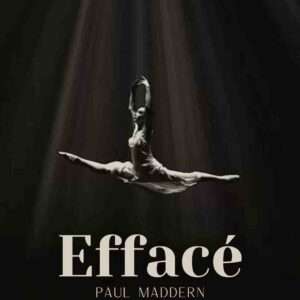
Effacé by Paul Maddern is a sonnet, just like Shakespeare’s Sonnet 29. Both poems explore the theme of love, however, there are many contrasts, particularly in the versification and the modern outplaying of the theme of love and romance. Check out the study guide on Effacé for more details.
Join the mailing list for your free IDENTITY poetry knowledge organiser:
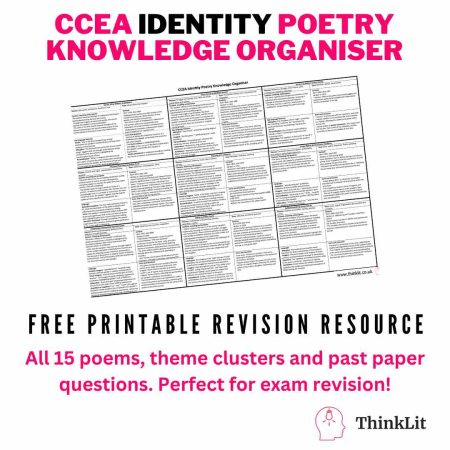
Free Identity Poetry Knowledge Organiser
Sign up to ThinkLit's mailing list to get your free CCEA Identity Poetry Knowledge Organiser
Thank you!
You have successfully joined our subscriber list.
Download your free printable knowledge organiser by clicking this link.
